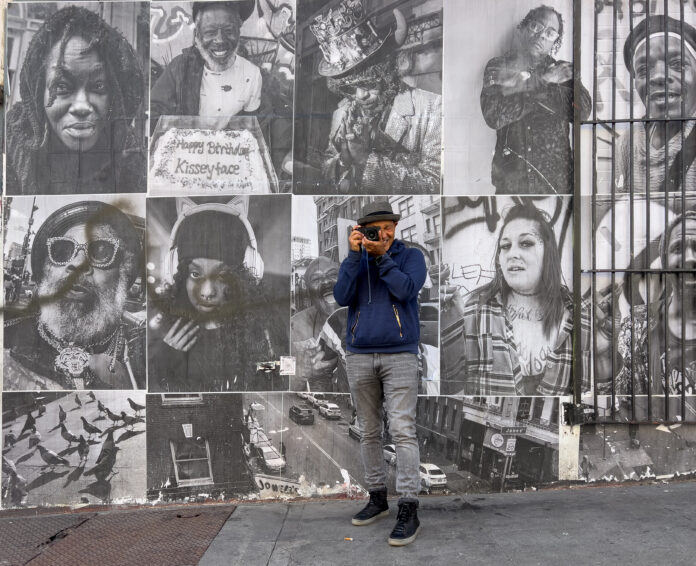Life on the corner of Jones and Ellis isn’t always pretty. Unhoused people struggle to survive in battered tents or cardboard shelters, and the effects of addiction are evident. This rough patch of poverty is often exploited by outsiders eager to promote the “doom loop” narrative of SF, or profit off other peoples’ misery. But through the work of fine art and street photographer Harry Williams Jr., many of the occupants of this area are feeling seen in a way they rarely— if ever—have before.
Equipped with a Leica Q2 monochrome camera, Williams has spent the past nine months getting to know those who live on the streets here or in surrounding SROs. And capturing them in mesmerizing black and white portraits. Not long ago, he printed some of the photos on sheets of 3’ x 4’ blueprint paper and with permission from the owner of the newish—yet to be named—corner store at 401 Ellis, created a mural that wraps around the front and side walls of the building. His friend and fellow photographer Daniel Danzig helped him put up the photos.
“He was like ‘this could either go really well or really bad,” Williams shared, chuckling. “I see these people on the street all the time, but it wasn’t like I could contact everybody and ask if I could use their picture in the mural. I decided to just put them all up and see what happened.”
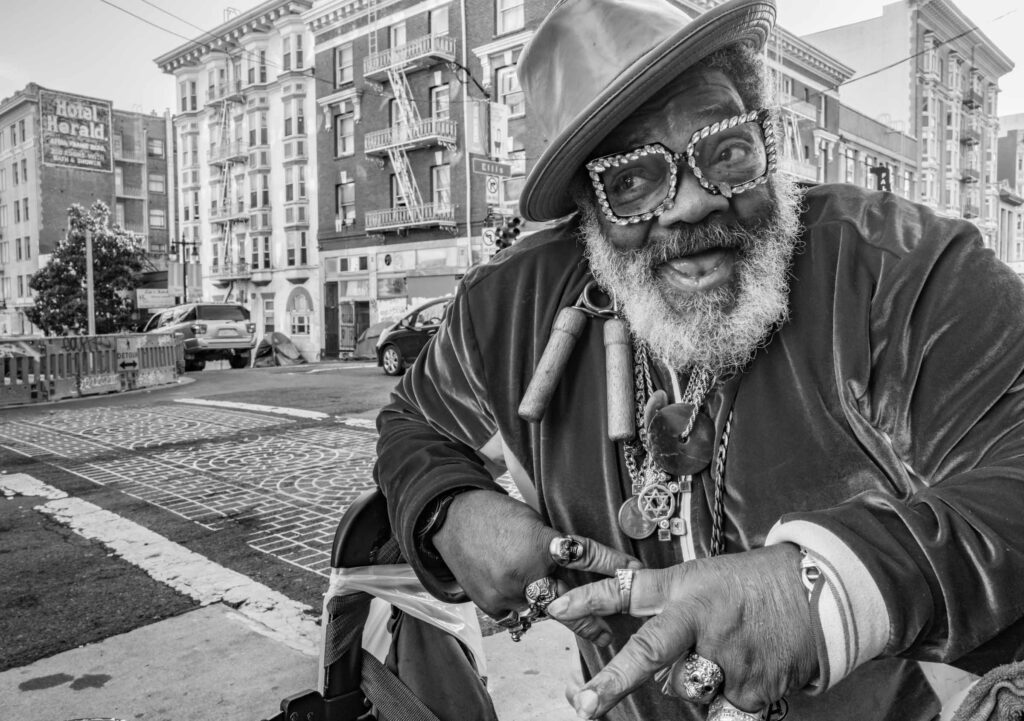
As he and Danzig worked on the mural, a crowd gathered. Some watching asked Williams why he wasn’t including a photo of them. Others he hadn’t yet photographed asked him to take their picture. The finished mural was an instant hit and is a source of pride for the neighborhood. Especially for the individuals featured in it. You can see signs of hard-living in the weary eyes and lines etched into some of the faces that gaze out from the walls. But Williams also captures many of his subjects in tender moments of joy, love, and friendship. Take the image of a man known as Kissey-Face, for example, beaming from behind a big birthday cake. Others are pictured with their partners or beloved dogs.
“The mural was a game-changer,” said Williams. “People in it tell me ‘Oh, you made me famous.’ Some of the photos almost look like album covers.”
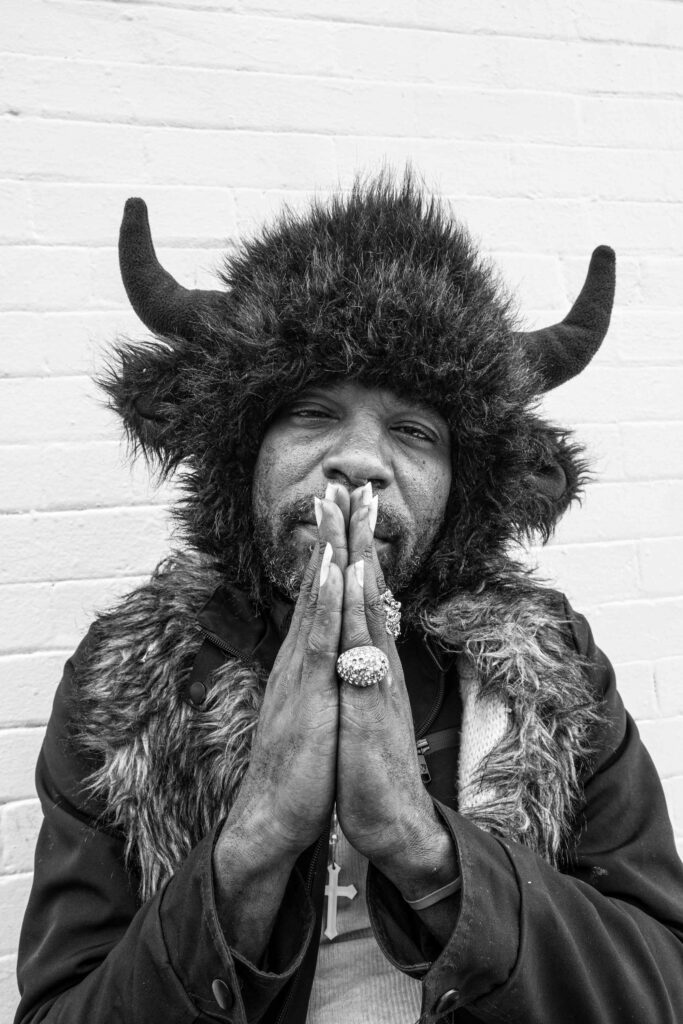
Williams has a degree in photography from The Ohio State University and works as a creative consultant. He started documenting subcultures in their surroundings in 1999 during a year-long trip traveling around Southeast Asia. His photos have been featured in galleries in San Francisco and elsewhere. And last year, he published a book of his street photography: Eye See You. He thinks of himself as more of an artist than a photographer. As passionate as he is about shooting in settings like the Tenderloin, he also loves taking pictures of San Francisco’s other sides.
“I like to walk at night and just concentrate on beautiful silhouettes and shapes,” he said. “It’s like turning the channel on a radio station and going from listening to rap to listening to jazz.”

Williams told 48 Hills that some residents near the mural strive to keep the area around it clean and uncluttered. Some are so protective of the mural, in fact, that when a young vandal recently spray painted one of the photos, a couple of men chased him down. They warned the guy to leave the mural alone—and sent him on his way with a parting blast in the face from his spray paint can.
Williams appreciates their concern. But he’s not too worried about the mural getting disfigured, noting that it comes with the territory. Plus, he can replace damaged photos with new ones, giving more people the thrill of seeing themselves on the corner store wall of fame.
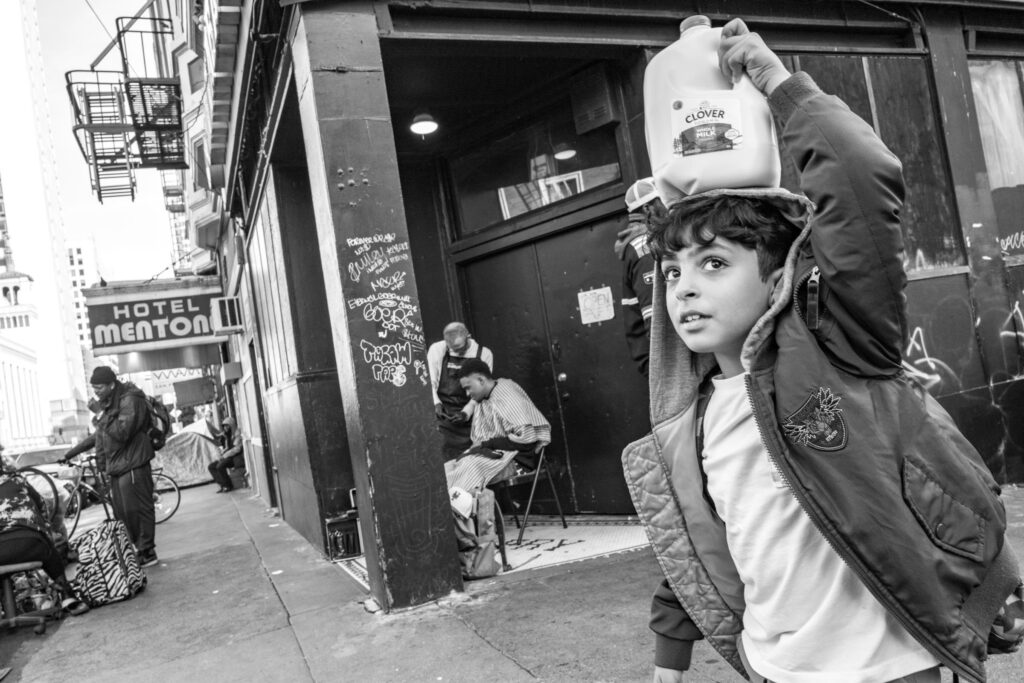
Street photography, especially of the unhoused, can feel voyeuristic. Williams tries to avoid this, managing to catch people in the spontaneous, unposed moments that make this style of photography so compelling. His secret is taking the time to earn his subjects’ trust and make them comfortable before he starts snapping pictures.
“I’ll just have a conversation with them,” he said. “Sometimes, I’ll tell them I love what they’re wearing. They’ll start laughing, and I’ll ask if I can take their picture. They usually say sure.”
He rarely poses people, but depending on what the light’s doing, he might guide them to another spot. “Sometimes, I’ll have them lean against a wall and have a cigarette. When people are smoking, they almost always instantly relax. I love the way their hands look holding a cigarette. It’s really kind of a beautiful moment.”
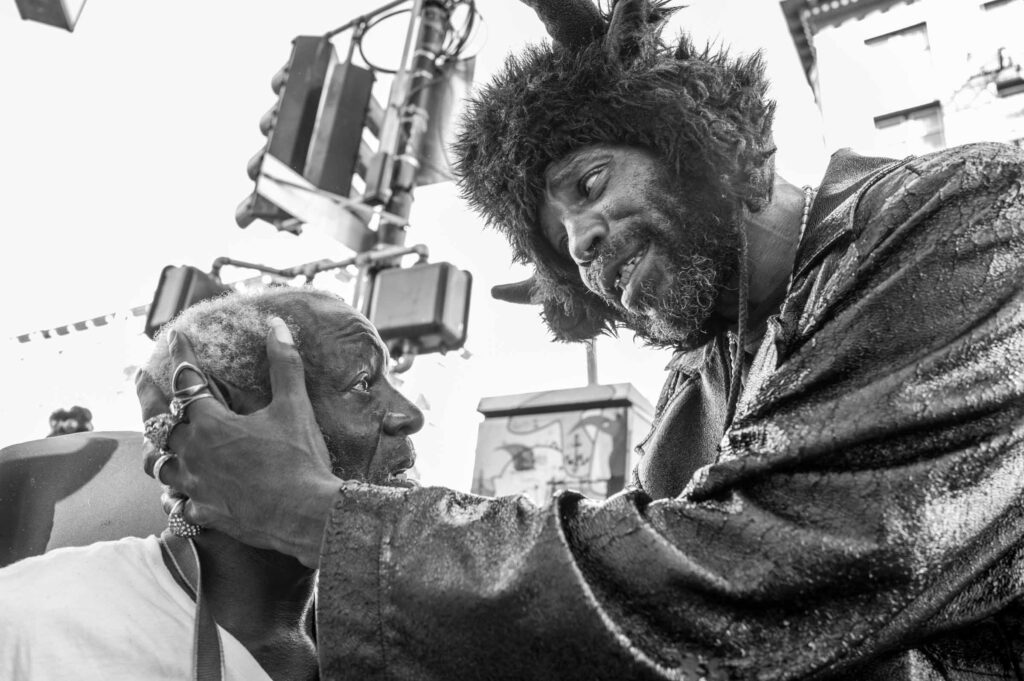
Before he was well-known in the neighborhood, Williams said he felt threatened sometimes. But for the most part, it’s been a positive experience. He considers many of those he’s photographed friends, sometimes joining in their birthday celebrations and providing a cake. (Several stopped by to say hello when 48 Hills interviewed Williams in front of the mural.) He’s drawn to the Tenderloin because he knows it may one day be unrecognizable. While some might consider this a good thing, Williams appreciates the unfiltered drama of this world and the spirit of those who inhabit it.
“I’m really interested in areas that could possibly be gentrified and be something totally different in another 20 years,” he explained. “So the photos are almost like a time capsule.”


